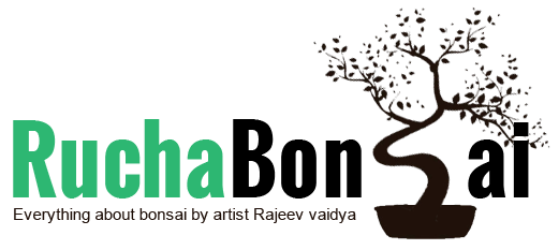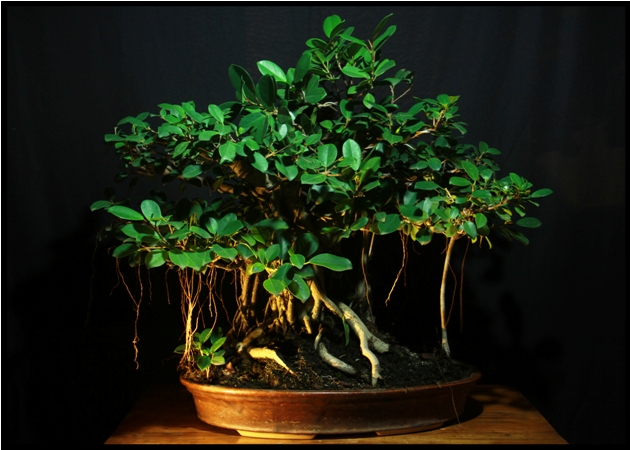Most tree species develop a form which has been genetrically determined. In fact the program for the germination, formation, shape and development of each tree is encoded in its seed (speak about natural microchip) The movement of its trunk has a distinction which forms the genesis for the shape, structure, stature and development of the tree and it is this trunk movement which is the basis of the classification of bonsai into various styles.
The five recognized styles of bonsai as defined by the Japanese are as follows:
1) Formal Upright (Jap: Chokkan)– where the trunk is absolutely straight from base to apex. (example: Ashoka tree; Latin Saraca Indica)
2) Informal Upright (Jap: Moyogi)- where the trunk the moves from side to side and from back to front (example: Gulmohor; Latin Delonix Regia)
3) Slanting (Jap: Shakkan)– where the trunk cants sharply at an angle of about 45 degrees to the base, either from the base or from about the level of the first branch. (example: any tree whose roots are unable to support its upright stature at some point of time onwards)
4) Cascade (Jap: Kengai and Han – Kengai)– where the trunk drops down from the base to the apex and the apex hangs below the base line of the pot (Cascade) or below the top line of the pot but above the base line (Semi-cascade) (example: any tree growing on a incline on a mountain-side)
5) Broom (Jap: Hokkidachi)– where all or most of the branches emerge from about more or less the same point on the trunk and fan out in all directions (example: Banyan or Vad; Latin Ficus Benghalensis)
Forest or Group plantings (Jap: Yose Ue) are a separate style category where a number of plants representing a grove of trees is planted in a cohesive arrangement in a single pot.
Apart from these five basic styles, there are other styles which emerge from the five basic styles:
1) Windswept style (Jap: Fukinagashi) – where not only the trunk but also the branches lean and sweep in one direction as if by strong wind action.
2) Clump Style (Jap: KabudachI)– where a number of trunks emerge from one root structure but still appear as separate trees.
3) Twin / Triple Trunk Style (Jap: Sokkan & Sankan) – where two or three trunks are divided at the base.
4) Exposed Roots (Jap: Neageri)– where the roots of the tree are exposed to a great extent before the trunk starts.
5) Bunjin Style (Jap: Bunjingi) – where the trunk is bare for most of the lengthy of the tree and the branches are sparse and almost at the top 1/3 rd of the tree.
6) Rock grown (Jap: Ishitsuki) – where trees are planted on a rock which acts as a pot
7) Root over rock (Jap: Sekijoju)– where the tree sits on the rock and the roots go down the rock and into the soil under the rock.
8) Twisted Trunk Style (Jap: Bankan) – where the trunk is very twisted, coiled and contorted.
9) Driftwood Style (Jap: Sabamiki/Sharimiki) – where the bark of the trunk is peeled off all along the length of the trunk (Sabamiki) or portions of the trunk or branches are peeled off (Sharimiki) to expose the dead wood underneath.
In the Forest style also there are variants, such as,
a) Raft style (Jap: Ikadabuki)– where a branches emerging from a single straight recumbent trunk assume the form of individual trunks but in a straight line, roots emerging from points along the original trunk.
b) Root Connected (Jap: Netsunagari) – where the trunk twists and turns along the horizontal axis and branches emerging along the line assume the form of individual trunks although they are connected by a single root system.
Probably the best reference books on styles as well as other aspects of bonsai are:
Bonsai Techniques Part I and II by John Naka and Bonsai by Yuji Yoshimura and Giovanna Halford.

